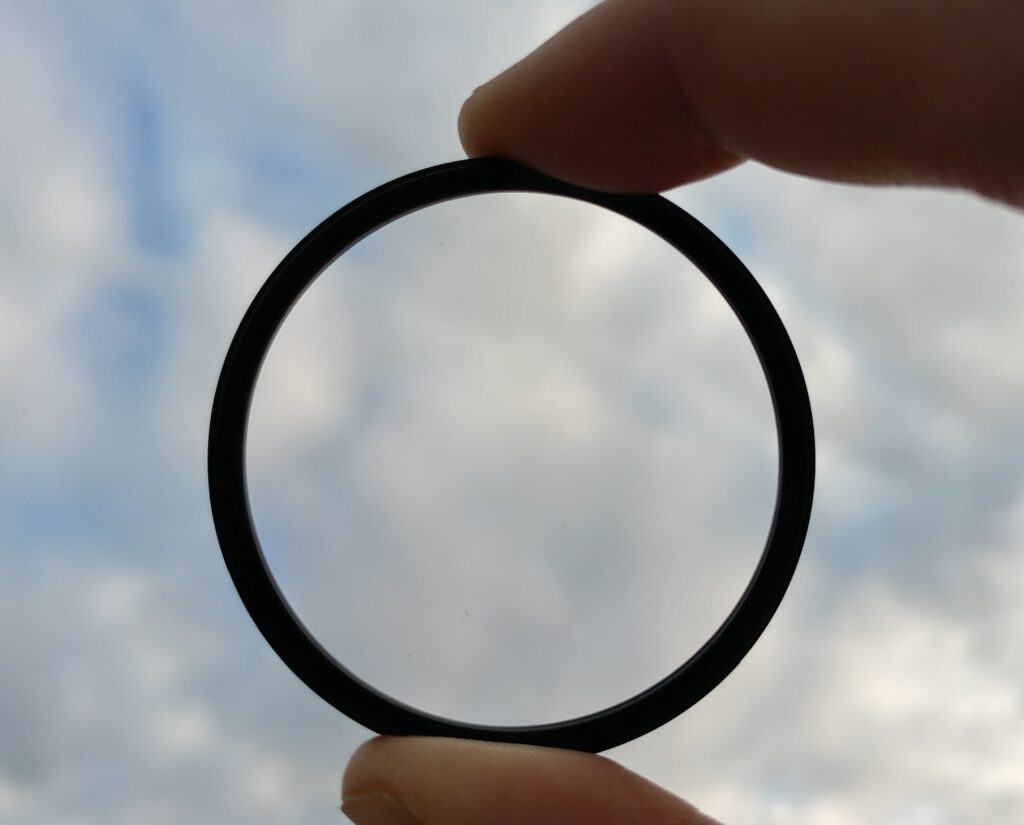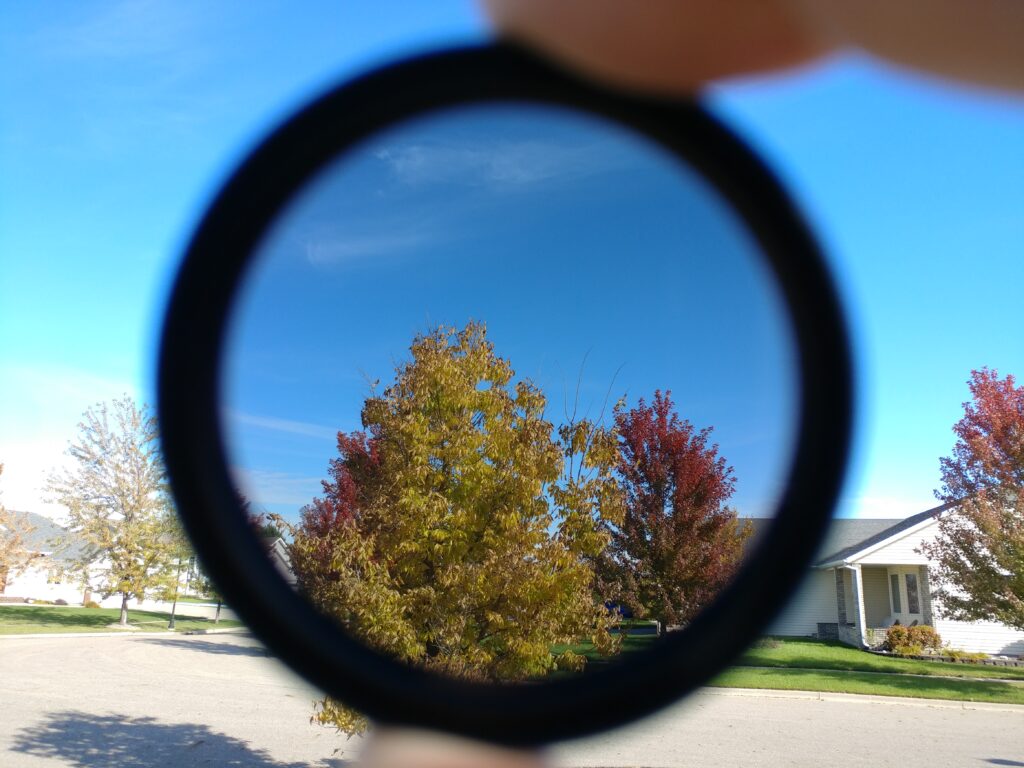Lens filters change the way light enters your lens and ultimately reaches your camera’s sensor. They also protect your lens from getting dirty or being scratched. There are a few different types of filter that matter.
UV Filter
If you are very worried about protecting your lens, this is the filter you should have on your lens to protect it. Otherwise, you don’t need it. These filters block ultraviolet light from entering your camera. Humans cannot see ultraviolet light, but in photos this light can show up as haze. Modern digital sensors do a good job of handling ultraviolet light already though, which is why UV filters are often used with a primary purpose of protecting the camera lens.

Polarizing Filter
This type of filter uses the same principles as sunglasses. Like sunglasses, polarizing filters reduce glare, improve color saturation, and remove haze. The effects of a polarizing filter cannot be reproduced in post processing. You should own this lens filter if you shoot anywhere with direct sunlight. These filters spin once attached to your lens. The purpose of this is to change the direction of polarization. By spinning the filter, you are changing the direction that light is blocked from. Spin the filter until the image is exposed to your satisfaction and glare is properly reduced.

Neutral Density Filter
These filters are darkened glass that stops light from getting to the sensor. They come in different darkness levels. The purpose is to get a lower shutter speed (long exposure) without blowing out the brightness of the image. The darker the filter, the longer the exposure can be. Common long exposure pictures are making moving water appear soft, showing movement in a city, or producing light trails.

Purchasing Filters
Check for the correct size. This information can be found on the end of your lens or inside your lens cap. Filter size is measured in millimeters.
Look for quality. The quality of your lens filter should match the quality of your lens. Pairing a $2000 lens with a $7 filter is a recipe for bad results.
Buy a case. If you are unable to safely store your filter in the packaging it came in, buy a case. Like a lens, filters can be scratched and get dirty. It is important to protect your filter.
Lens Hood
Lens hoods have a similar purpose to lens filters. They protect the lens and stop light from doing what you don’t want it to. They shade the front of the lens from direct light and thus reduce the possibility of lens flare and washed out images.
Lens hoods also protect your lens. They not only stop direct light, but whatever is blowing around from getting to your lens. Dropping your camera is also less of a problem, because the protruding lens hood can take the brunt of the fall instead of your lens. Your camera or lens likely came with a lens hood. Put it on.

Thanks for reading! I hope you enjoyed the article!
